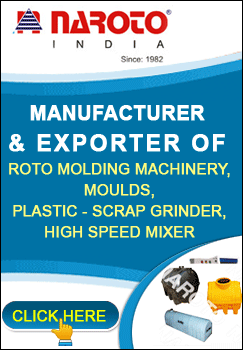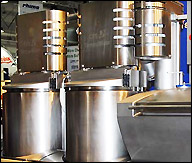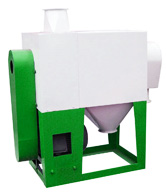|
|
|
|
|
|
|
|
When it comes to manufacturing large hollow plastic parts, nothing beats the process of rotomolding. Compared to other molding or casting processes like injection or blow molding, rotomolding is exceptionally cost efficient and the products produced are also of better quality. |
|
|
 |
Equipment and Tooling |
|
|
|
|
|
|
|
|
|
|
|
 |
Mould Products |
|
|
|
|
|
|
|
| |
 |
| |
|
|
|
| Home > Machinery > Processing Machinery & Equipment |
Processing Machinery & Equipment |
Autoclaves
 For many decades, medical facilities faced the challenge of sterilization of scientific equipment for re-use. To overcome this problem, advanced range of autoclaves has been introduced that are one of the best processing machines that assist in sterilizing equipment for reuse or disposal. Few years ago, surgical instruments were sterilized in boiling water for several minutes. Now things have changed, as most of the equipment are only meant for single use. There is, however, problem of disposal. In the 20th century, where almost all hospital instruments were burnt, burning is not an environmental friendly tactic for disposal. Prior to disposing any instrument, it needs to be sterilized to prevent landfill contamination. That is why, every facility using medical instrument needs several autoclaves for sterilization. For many decades, medical facilities faced the challenge of sterilization of scientific equipment for re-use. To overcome this problem, advanced range of autoclaves has been introduced that are one of the best processing machines that assist in sterilizing equipment for reuse or disposal. Few years ago, surgical instruments were sterilized in boiling water for several minutes. Now things have changed, as most of the equipment are only meant for single use. There is, however, problem of disposal. In the 20th century, where almost all hospital instruments were burnt, burning is not an environmental friendly tactic for disposal. Prior to disposing any instrument, it needs to be sterilized to prevent landfill contamination. That is why, every facility using medical instrument needs several autoclaves for sterilization.
Sterilization - The Process
All the medical instruments are sterilized through the use of highly heated steam The hotter the steam inside the autoclave, the lesser is the time required to kill microbes such as virus, bacteria or any other microorganisms. The temperature inside is adjusted by removing the air from the machine, which is ineffective in sterilization as compared to steam. The air can be removed through vacuum pump, gravity or alternating between pressurizing and depressurizing the chamber. With the removal of air, the steam immediately starts its cleaning task.
Once the bacteria present inside are processed, the equipment can be either reliably reused or safely thrown without any fear of damaging environment. Thus, the safety of the patients rests totally in the functioning of the autoclaves and their task in sanitizing used medical equipment.
The function of autoclave is to sanitize/sterilize the used medical equipment in order to ascertain safety of the patients.
Heat Exchanger
A heat exchanger is a device that assists in the transfer of heat from one fluid to another. In many cases, fluids are separated by a solid wall that prevents them of mixing. However, in other cases, the fluids are in direct contact with each other. In efficient heat exchangers, the wall separating the liquids is maximized while minimizing the fluid flow resistance.
Common machines containing heat exchangers include air conditioners, refrigerators and space heaters. Heat exchangers are also widely used in chemical processing and power production applications. Perhaps the most commonly known heat exchanger is a car radiator, which cools the hot radiator fluid by taking advantage of airflow over the surface of the radiator.
Pressure Vessel

A closed container that is used to hold the gases or liquids at a pressure varying from the ambient pressure is called Pressure Vessel. These vessels are extensively used in various industrial segments as well as domestic sector as hot water tanks and compressor air receivers. Some of the pressure vessels are commonly used in diving cylinder, distillation towers, recompression chamber, autoclaves and more. Furthermore, oil refineries, mines, petrochemical plants also use range of pressure vessels in nuclear reactor vessel, habitat of a submarine, habitat of a space ship, pneumatic reservoir, rail vehicle air-brake reservoir, hydraulic reservoir under pressure, road vehicle air-brake reservoir, etc. It is also used in storage vessels for liquefied gases like ammonia, propane, chlorine, butane and LPG.
They are different in shapes, however, shapes made of sections of spheres, cylinders and cones are commonly used. The most common design is a cylinder with end caps known as heads. More complicated shapes are usually much harder to examine for safe operations and are usually more difficult to construct.
|
| |
| |
 |
|
| |
 |
| |
|
|
